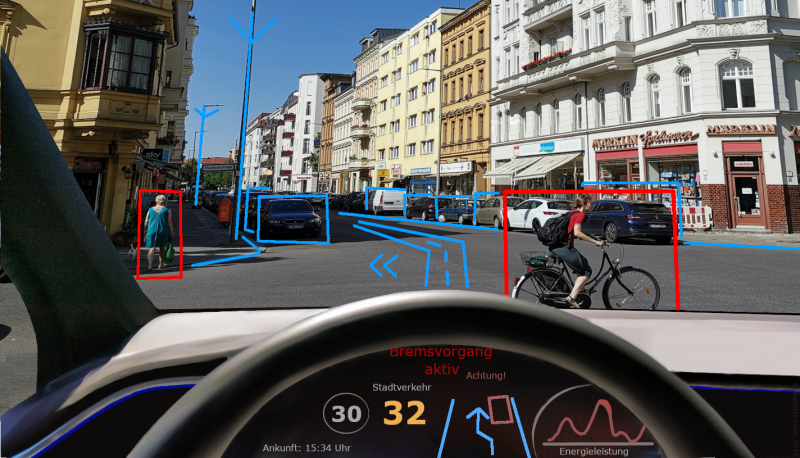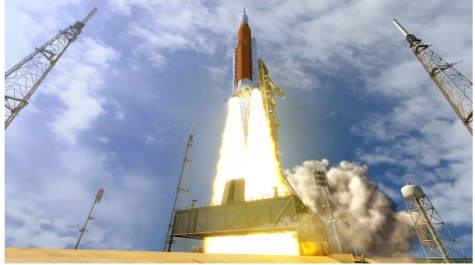Self-Driving Cars Still Have Long Road to Acceptance
Eschenzweig / Wikimedia Commons
The self-driving car is going to do all the work, while you just sit back and relax. It works with a lot of interesting technology that you can read about in this article!
When it comes to self-driving cars, the future was supposed to be now. Around 1995, according to IEEE Spectrum, a publication focused on engineering, several companies claimed that by 2020 self-driving cars would be a reality. And it wasn’t just visionaries like Elon Musk, but well-known companies like Nissan and Toyota.
Though self-driving cars aren’t the norm, they do exist and are being improved every day. According to Policy Advice’s Self Driving Car Statistics’, there are currently more than 1,400 self-driving cars in the USA. The exact timeline of when self-driving cars will be publicly available is not clear.
“Dozens of companies – including Tesla, Google spinoff Waymo and ride-sharing giants Uber and Lyft – are testing self-driving vehicles in select locations, such as Boston, Las Vegas, Phoenix, and Columbus, Ohio. According to USA Today’s article “20 predictions for 2020.” However, the article went on to say that, “Widespread use of a truly autonomous vehicle is not yet here: Experts say it might still be decades before we see a car that can drive anywhere it pleases.”
The Consumer Technology Association explored the reasons for the delay in their article “What’s Holding up Self-Driving Cars?” They interviewed Danny Shapiro, senior director of automotive at semiconductor maker NVIDIA Corp.
“The reality is that development is still moving full steam ahead, but we’re doing things that have never been done before,” said Shapiro in the article. “It is proving to be more complex, it’s more challenging, and it’s high risk.”
Once they become available, another challenge will be just getting people to use them.
“As someone who loves cars, I’m really into the feel of driving a car, and shifting gears and stuff like that,” said Longfellow student and avid car enthusiast Dhruv S. Dhruv has raced in various karting leagues over the past eight years, even earning a championship after several 2nd and third place wins. “It would definitely be a change for society, and for the better, but first of all, the excitement of driving will be taken away.”
How do they work?
Various self-driving technologies have been developed by Google, Uber, Tesla, Nissan, and other major automakers, researchers, and technology companies, according to a page on the Union Of Concerned Scientists’ (UCS) website. The page, entitled “Self Driving Cars Explained,” states that most self-driving systems create and maintain an internal map of their surroundings based on a wide array of sensors, like radar.
“They rely very heavily on technology. Lidar is what the technology is called. They use lasers to shoot an object , it bounces back, and the car processes how far away the object is,” explained English teacher Tom Grady. Grady spent a long time in the car manufacturing business and has closely followed self-driving technology.
The UCS article stated that Uber’s self-driving model uses sixty-four laser beams and other sensors to construct their internal map. Google’s models have, at many stages, used lasers, radar, and high-powered cameras, to get the lay of the land. They’ve even used sonar, or sound wave technology, to communicate with or detect objects.
Software then processes those inputs, finds a route, and sends instructions to the vehicle’s “actuators,” which control acceleration, braking, and steering. Hard-coded rules are built in to make sure the vehicle runs well and knows its way through traffic.
“Based on how advanced technology is in these things, there are little buttons put in that alerts you if you’re about to hit something. This is the first time these are introduced. Since then, all other kinds of sensors have been developed,” said Mr. Grady
Obstacle avoidance algorithms help the software follow traffic rules and navigate obstacles.
The safety of self-driving cars
According to the website ‘National Highway Traffic Safety Administration’ (NHTSA), the safety benefits of automated vehicles are supreme. Automated vehicles’ potential to save lives and reduce injuries is rooted in one critical and tragic fact: 94% of serious crashes are due to human error. Automated vehicles have the potential to remove human error from the crash equation, which will help protect drivers and passengers, as well as bicyclists and pedestrians. Despite these statistics, people still have an inherent distrust of machines making decisions.
“It relies a lot on technology,” said Mr. Grady. Even though they have a safety system built-in, he is hesitant to trust it entirely. “It could crash. I mean, airplanes crash, and you can get killed. I do have a problem with that regarding self-driving cars.”
When you consider more than 36,560 people died in motor vehicle-related crashes in the United States in 2018, you begin to grasp the lifesaving benefits of driver assistance technologies. Despite the benefits, a survey found that most Americans worry about safety, legality, and hacking when it comes to self-driving cars.
“If self-driving cars become widespread enough, then hacking may become an issue because this is obviously new technology, so it is very vulnerable,” suggested Dhruv. But his bigger concern is safety. “There have been multiple Tesla crashes when someone is trying the self-driving vehicle, and it hits somebody,” he added.
Environmental impacts
According to the Union Of Concerned Scientists, environmental impacts are a serious concern and a major uncertainty. Accessible, affordable, and convenient self-driving cars could increase the total number of miles driven each year. If those vehicles are powered by gasoline, then transportation-related climate emissions could skyrocket. If, however, the vehicles are electrified and paired with a clean electricity grid—then transportation emissions could drop, perhaps significantly.
Conclusion
Although we don’t know when self-driving cars will be available to the public, many people are working on making the world easier with them right now. Built-In, an online tech community, has published an article entitled “The Top 21 Self-Driving Car Companies Paving the Way for an Autonomous Future.” According to the report, many companies like Zoox, Arity, and Waymo are working very hard to make self-driving cars available to consumers. But not everyone is excited about the possibilities.
“I think that it will definitely be a sad day when regular cars do not exist,” said Dhruv, “but I feel like it’s not going to be a one day thing. The transition between it will be a minimum of 100 years, in my opinion. I think people will just accept the fact that the world has to move.”
















